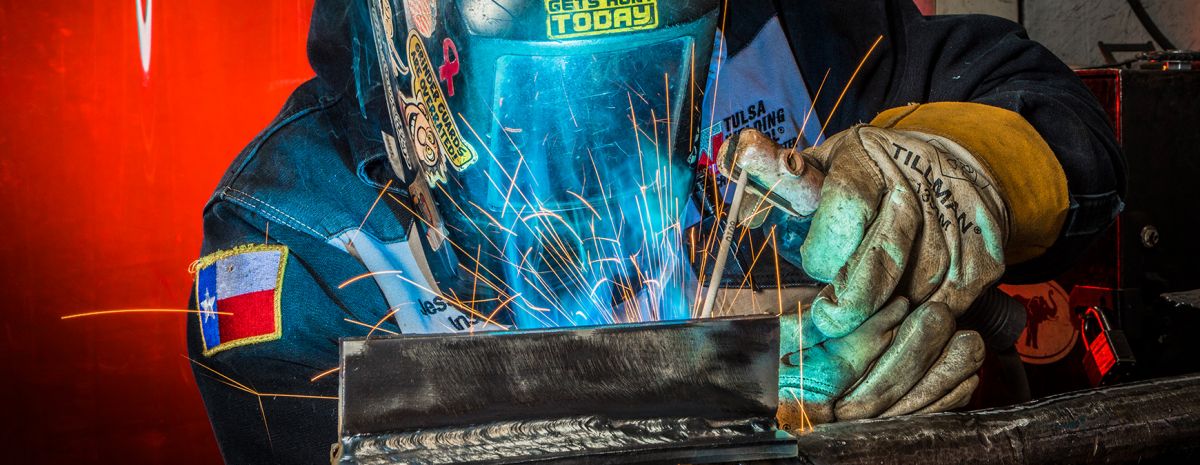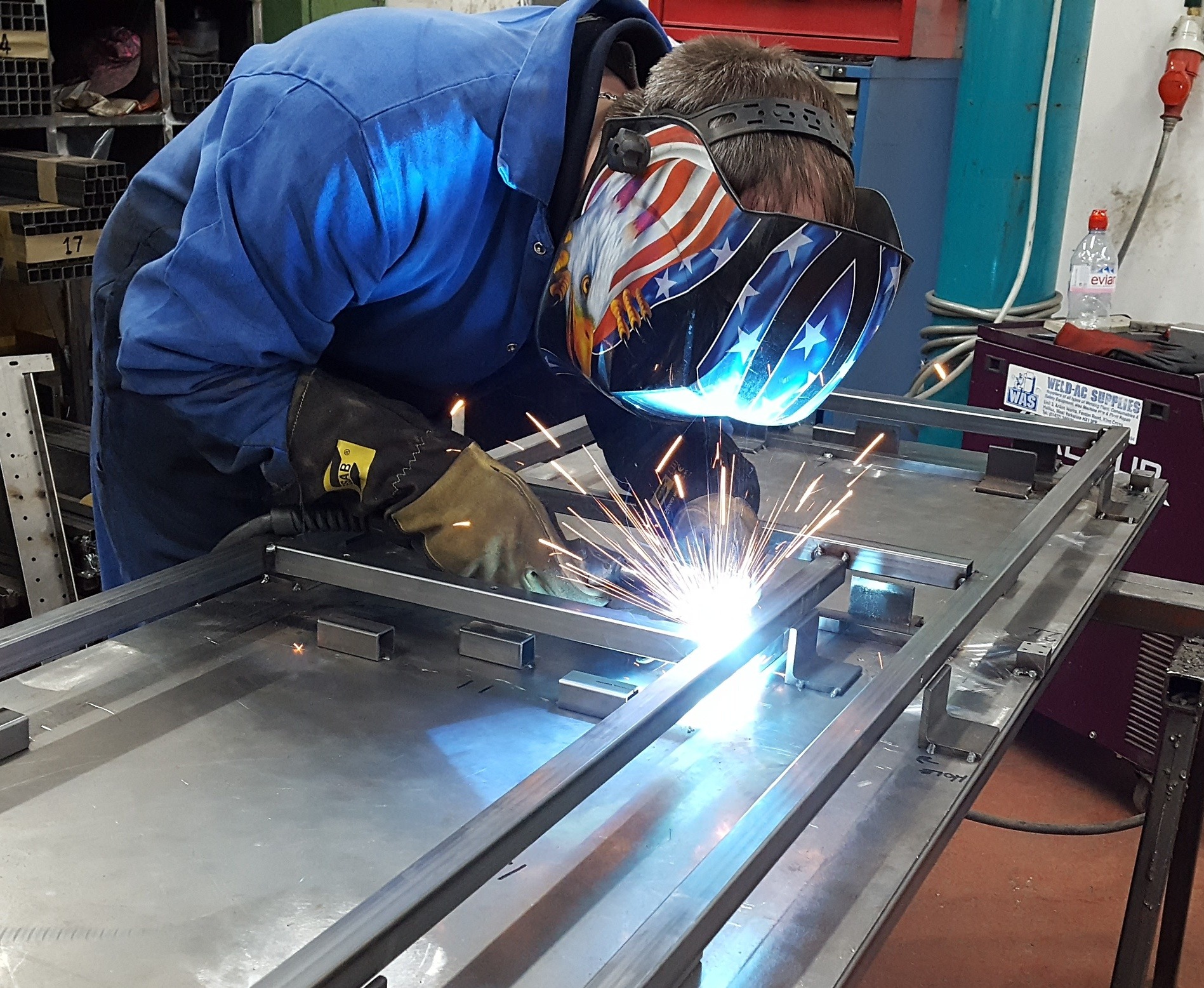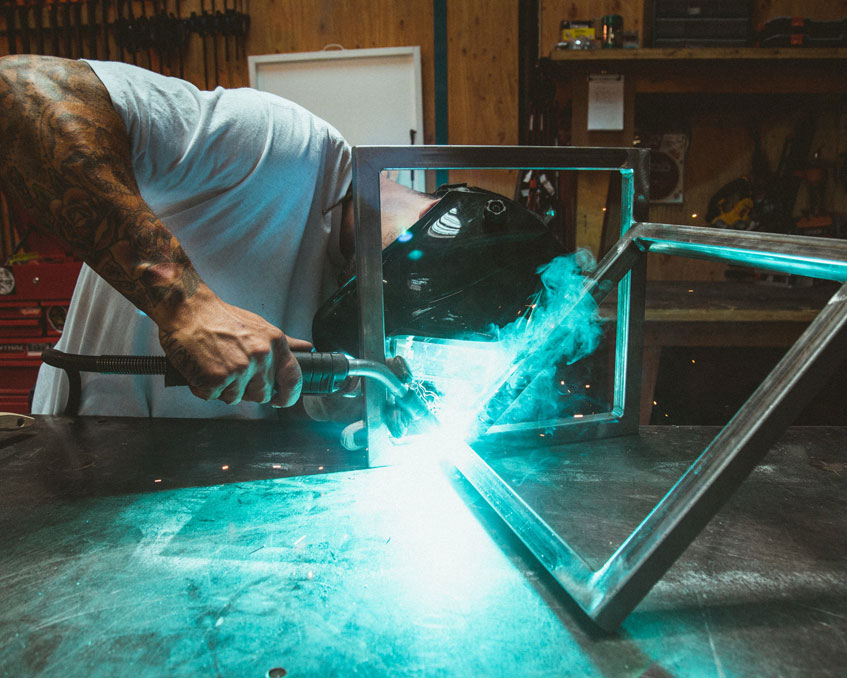Common Welding Repair Service Issues and How to Address Them Successfully
Welding repair work commonly encounter an array of issues that can jeopardize the honesty of the end product. Common troubles include poor penetration, porosity, and imbalance, to name a few. Each flaw presents one-of-a-kind obstacles that require details strategies for resolution. Recognizing these issues is important for welders aiming to boost their outcomes and skills. This discussion will discover these typical welding fixing problems and efficient methods to resolve them.
Poor Penetration
Insufficient infiltration takes place when the weld steel falls short to completely fuse with the base material, causing weak joints and potential structural failings. This concern usually comes from insufficient heat input, incorrect electrode angle, or incorrect welding speed. Welders might experience insufficient penetration as a result of a miscalculation of the required criteria for a specific product density or kind. Furthermore, contamination on the base material's surface area can prevent reliable bonding, aggravating the trouble. To address poor infiltration, welders should ensure appropriate settings on their devices and maintain a clean work surface. Routine examination of welds is recommended to identify any deficiencies early, permitting for prompt corrections and the avoidance of endangered architectural integrity in welded assemblies.
Porosity
Porosity is an usual defect in welded joints that shows up as little gas bubbles trapped within the weld metal. This problem can jeopardize the honesty of the weld, leading to decreased toughness and prospective failure under stress. Montana Mobile Welding and Repair Belgrade Welding. Porosity usually develops from contamination, moisture, or inappropriate welding strategies, which permit gases to leave into the molten weld pool. To resolve porosity, welders must assure appropriate surface preparation, preserve a clean workplace, and use suitable welding criteria. Furthermore, choosing the best filler product and securing gas can reduce gas entrapment. Regular inspection and testing of welds can aid recognize porosity early, ensuring timely corrective actions are taken, therefore protecting the quality and integrity of the welded framework
Misalignment
Misalignment in welding can emerge from numerous variables, consisting of inappropriate configuration and thermal development. Comprehending the origin is vital for reliable resolution. Numerous improvement strategies are offered to realign parts and assure structural honesty.
Reasons for Misalignment
Welding imbalance usually originates from a range of underlying problems that can jeopardize architectural honesty. One primary reason is improper fit-up of parts before welding, which can result in voids and uneven surfaces. Variants in thermal development during the welding process can additionally lead to distortion, specifically if the materials being joined have different coefficients of expansion. Furthermore, insufficient fixturing and clamping might stop working to hold parts securely in area, bring about activity throughout welding. Poorly conserved equipment, consisting of welding equipments and devices, might introduce disparities in the weld grain, more contributing to imbalance. Operator error, stemming from insufficient training or experience, can also play a considerable duty in developing misaligned welds.

Modification Techniques Readily Available
Attending to misalignment effectively needs a combination of rehabilitative techniques customized to the details issues at hand. One usual method is making use of components or jigs to hold elements in the correct setting throughout welding, ensuring consistent alignment. Additionally, preheating the materials can aid minimize distortion and improve fit-up. For considerable imbalance, mechanical adjustment strategies, such as using hydraulic jacks or clamps, can be used to remedy the position prior to welding. Post-weld warm treatment may additionally be necessary to relieve tensions triggered by misalignment. Careful evaluation and modification throughout the configuration phase can protect against misalignment concerns from ending up being substantial problems, advertising a smoother welding process and enhancing general architectural stability.
Distortion
Distortion is a typical obstacle in welding that can emerge from various factors, consisting of irregular cooling and heating. Comprehending the reasons for distortion is important for executing effective avoidance techniques. Resolving this concern not just improves architectural integrity however additionally boosts the total top quality of the weld.
Root causes of Distortion
When subjected to the intense warm of welding, products frequently go through adjustments that can cause distortion. This sensation mostly emerges from thermal growth and tightening during the welding process. As the weld area heats up, the product expands; upon cooling, it acquires, which can create internal stresses. Additionally, unequal heating throughout a workpiece can aggravate these tensions, resulting in bending or bending. The kind of product also plays a considerable duty; metals with varying thermal conductivity and coefficients of development might react in different ways, causing unpredictable distortions. Furthermore, poor joint layout and poor fixturing can add to imbalance throughout welding, enhancing the chance of distortion. Understanding these causes is necessary for efficient welding repair and avoidance techniques.
Avoidance Techniques
Effective avoidance methods for distortion throughout welding concentrate on regulating warm input and ensuring proper joint layout. Preserving a constant warmth input aids to decrease thermal development and tightening, which can bring about distortion. Making use of methods such as preheating the work surface can also decrease the temperature level gradient, promoting uniform home heating. In addition, picking suitable joint layouts, such as T-joints or lap joints, can enhance stability and lower tension concentrations. Carrying out correct fixturing to protect the work surfaces in position even more aids in keeping positioning during the welding procedure. Staggered welding series can distribute warmth a lot more uniformly, avoiding localized distortion. By applying these strategies, welders can greatly lower the likelihood of distortion and boost the total top quality of their welds.
Fracturing
Cracking is a typical concern encountered in welding fixings, typically arising from various factors such as incorrect cooling prices, product choice, or inadequate joint prep work. The occurrence of cracks can substantially compromise the stability of the weld, resulting in possible failures during operation. To resolve this concern, welders should first examine the source, making sure that materials work and appropriately picked for the details application. In addition, regulating the air conditioning price during the welding process is important; fast air conditioning can generate tension and bring about breaking. Correct joint style and prep work likewise add to decreasing the threat. Executing these methods can boost weld top quality and durability, inevitably lowering the possibility of splitting in ended up weldments.

Insufficient Blend
A substantial problem in welding repairs is insufficient combination, which takes place when the weld steel does not properly bond with the base product or previous weld passes - Montana Mobile welding lens Welding and Repair Belgrade Welding. This problem can lead to weaknesses in the joint, possibly jeopardizing the stability of the welded structure. Variables adding to insufficient fusion consist of insufficient warm input, improper welding technique, and contamination of the surface areas being signed up with. To address this problem effectively, welders must ensure proper pre-weld cleansing and surface area preparation, in addition to adjust their welding parameters to accomplish adequate infiltration and blend. Normal assessment during the welding process can also assist determine insufficient blend early, enabling for timely restorative actions to enhance the general high quality of the weld
Overheating
While welding repairs can enhance structural integrity, overheating provides a substantial difficulty that can result in product deterioration. Too much heat during welding can alter the mechanical residential or commercial properties of steels, leading to minimized stamina, enhanced brittleness, and warping. This sensation is particularly critical in high-stress applications where structural integrity is extremely important. Recognizing overheating can include visual examinations for discoloration or distortion, in addition to monitoring temperature level during the welding process. To minimize the risks associated with getting too hot, welders ought to employ suitable methods, such as regulating warm input, adjusting travel speed, and using ideal filler materials. Additionally, applying pre- and post-weld warm therapies can aid restore product homes and improve the general quality of the repair work, ensuring long-term performance and safety and security.
Often Asked Concerns
What Are the Usual Signs of a Welding Flaw?

Just How Can I Check My Welds for Quality?
To examine welds for high quality, one can utilize visual inspections, ultrasonic screening, and radiographic approaches. Each strategy assures architectural honesty, identifies defects, and validates adherence to specified criteria, eventually enhancing the dependability of the welded joints.
What Security Precautions Should I Take While Welding?
When welding, one ought to prioritize security by using ideal individual safety equipment, making sure correct ventilation, protecting combustible products away, keeping a tidy office, and recognizing environments to avoid injuries and accidents.
Can I Fix a Weld Without Redesigning the Entire Joint?
Repairing a weld without redoing the whole joint is possible, depending upon the damages (Fabrication). Techniques such as grinding, adding filler product, or using a welding procedure can efficiently automatic welding resolve details imperfections while protecting the surrounding structure
What Devices Are Vital for Reliable Welding Fixes?
Important tools for effective welding repairs include a welding device, wire brush, mill, safety gear, clamps, and filler materials. Each tool plays an essential duty in making certain high quality and safety and security throughout the fixing process. Porosity normally arises from contamination, wetness, or incorrect welding techniques, which enable gases to get away into the molten weld swimming pool. Inadequately kept equipment, consisting of welding makers and devices, might introduce variances in the weld bead, more adding to misalignment. When subjected to the extreme warm of welding, materials usually undertake changes that can lead to distortion. Cracking is a common issue encountered in welding fixings, usually resulting from different factors such as incorrect air conditioning prices, material choice, or poor joint preparation. A substantial issue in welding repair work is incomplete blend, which happens when the weld metal does not sufficiently bond with the base material he has a good point or previous weld passes.